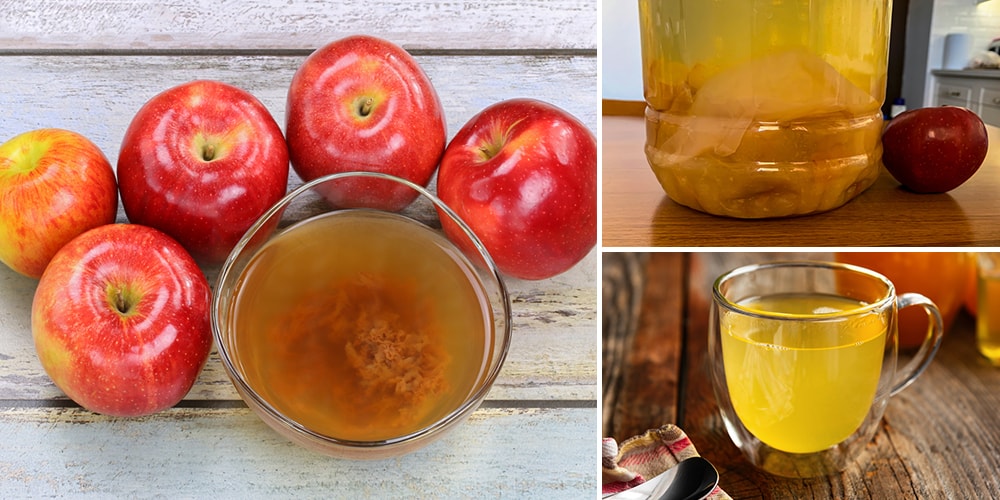
Best Tea for Period Cramps
Nature has always offered comfort where modern medicine often brings only temporary relief. For centuries, women have turned to herbal teas to soothe menstrual pain, balance mood, and restore calm during those difficult days of the month. While pills can dull the discomfort, plants work deeper, helping the body realign rather than simply mask the symptoms.
The best tea for period cramps depends on your needs, but many herbs share a common goal: relaxing tense muscles, easing inflammation, and bringing balance back to the body’s natural rhythm.
In many traditional cultures, herbal tea during menstruation was more than a remedy; it was a ritual of respect for the body’s natural cycles. Women gathered plants, shared knowledge, and found strength in nature’s quiet support. Each herb carried its own story, rooted in generations of care.
By understanding which plants bring comfort and why, we learn to treat our bodies with patience rather than urgency. These teas remind us that healing takes time and attention, not force.
Why Herbal Teas Help
Cramps occur when the uterus contracts to shed its lining. For some, those contractions are intense, amplified by stress, diet, or hormonal imbalance. Herbal teas address these causes gently, offering nutrients that support circulation and reduce muscle tension from within.
Unlike synthetic painkillers, herbs don’t shut down the body’s processes. They encourage natural regulation, calming both the physical and emotional turbulence that often accompany menstruation. When brewed and sipped slowly, these teas become more than a remedy; they become a ritual of self-care.
Another advantage of herbal tea is that it nourishes as it heals. Many of these herbs contain trace minerals like magnesium and calcium, which help prevent future cramps by supporting healthy muscle function. Over time, your body learns to rely on balance instead of force.
Teas also encourage hydration, which is often overlooked during the menstrual cycle. Dehydration can make cramps worse, but warm herbal infusions replenish the body’s fluids and relax the muscles. Every cup becomes both comfort and therapy, working in harmony with the body rather than against it.
🌿 Top 5 Teas for Period Cramps
- Chamomile – The Soother
- Benefits: Relaxes muscles, reduces anxiety, improves sleep, eases bloating.
- How to Brew: Steep 1–2 teaspoons of dried chamomile flowers in hot water for 10–15 minutes, covered. Add honey for extra calm.
- Ginger – The Warmer
- Benefits: Reduces inflammation, improves circulation, eases sharp cramps, supports digestion.
- How to Brew: Simmer 5–6 thin slices of fresh ginger in water for 10 minutes. Drink warm, not boiling.
- Peppermint – The Relaxant
- Benefits: Relieves muscle tension, soothes nausea, reduces bloating, refreshes energy.
- How to Brew: Steep a handful of fresh leaves or 1 teaspoon of dried peppermint in hot water for 8–10 minutes.
- Cinnamon – The Balancer
- Benefits: Improves circulation, reduces pain, stabilizes mood, and supports hormonal balance.
- How to Brew: Add one cinnamon stick or 1 teaspoon of ground cinnamon to a cup of boiling water. Steep for 10 minutes before straining.
- Raspberry Leaf – The Traditional Healer
- Benefits: Strengthens the uterus, reduces heaviness and cramps, replenishes minerals.
- How to Brew: Steep 1 tablespoon of dried raspberry leaves in hot water for 10–15 minutes. Drink daily before and during your period.
Now let’s dive deeper into these 5 herbal teas for period pain.
Chamomile Tea: The Soother
Chamomile is one of the most ancient remedies for menstrual discomfort. Its mild sedative effect helps relax both the uterus and the nervous system, easing spasms and reducing irritability. The gentle scent alone has a calming influence, reminding the body to rest and release.
Regular use of chamomile tea can also help regulate mood swings and promote better sleep during the menstrual cycle. It’s particularly helpful for those who experience tension headaches or anxiety along with cramps.
To make the most of chamomile, steep dried flowers for at least 10 minutes, covered, to preserve the essential oils. Adding a touch of honey enhances both the taste and the soothing properties.
Chamomile also supports digestion, which often becomes sluggish during menstruation. Its anti-inflammatory compounds help calm the stomach, reduce bloating, and promote gentle elimination. When combined with other herbs like lemon balm or mint, it creates a relaxing blend for both mind and body.
Because chamomile is so gentle, it can be enjoyed daily throughout your cycle. Consistent use helps balance hormonal responses over time, reducing the severity of cramps month after month.
Ginger Tea: The Warmer
Ginger is one of nature’s most powerful anti-inflammatories. For centuries, women have used it to ease digestive discomfort and menstrual pain alike. It warms the body from the inside, improving blood flow and reducing the intensity of cramps.
The compounds in ginger help block prostaglandins, the chemicals that trigger uterine contractions. This makes it particularly useful for those who experience sharp, stabbing cramps in the first days of menstruation.
A simple ginger tea made from freshly sliced root, simmered for 10 to 15 minutes, can bring relief almost immediately. Drink it warm, not hot, and let its earthy heat settle your body into balance again.
Beyond its soothing properties, ginger also strengthens the immune system and supports the liver in processing excess hormones. This helps restore equilibrium during the hormonal fluctuations of the menstrual cycle.
Ginger pairs beautifully with cinnamon, lemon, or honey for added flavor and healing depth. Taken regularly, it builds warmth and vitality, reminding the body that relief can come from within.
Peppermint Tea: The Relaxant
Peppermint tea is a cooling, refreshing way to soothe cramping muscles and reduce bloating. The natural menthol in peppermint acts as a mild muscle relaxant and pain reliever. It also helps calm the digestive system, which often becomes sensitive during menstruation.
Those who experience nausea or stomach upset during their period often find peppermint tea a gentle companion. It clears the head, calms the nerves, and restores energy without caffeine.
For best results, drink peppermint tea warm throughout the day. It pairs beautifully with a bit of lemon balm or chamomile for a balanced, restorative blend.
Peppermint also helps the body release tension in the lower abdomen and back. Its cooling nature can bring immediate comfort to muscles that feel tight or overworked. Inhaling the steam while you sip deepens the relaxing effect and clears the mind.
Over time, peppermint tea supports digestive balance and can reduce water retention. It’s an excellent choice when you need relief that feels both fresh and comforting.
Cinnamon Tea: The Balancer
Cinnamon isn’t just a kitchen spice; it’s a powerful herbal ally. It helps regulate blood sugar levels, stimulate circulation, and reduce inflammation. These combined effects make it especially useful for easing both cramps and fatigue.
It’s also naturally warming, which can help improve blood flow to the uterus and relieve tension in the lower abdomen. The subtle sweetness of cinnamon tea provides comfort when you’re craving something soothing yet restorative.
Combine cinnamon sticks with a few slices of fresh ginger for a deeply warming tea that supports the entire body through the menstrual cycle.
Cinnamon also supports hormonal stability. By helping regulate insulin levels, it reduces the blood sugar spikes that often worsen irritability and fatigue. This makes it especially helpful for those who experience mood swings before or during their period.
In addition to its physical benefits, cinnamon’s aroma promotes emotional warmth and comfort. Drinking it can feel like wrapping yourself in a soft blanket, both grounding and uplifting at the same time.
Raspberry Leaf Tea: The Traditional Healer
Often called the “woman’s herb,” red raspberry leaf has been used for generations to support female reproductive health. It’s rich in iron, magnesium, and tannins that strengthen the uterine muscles, reducing both pain and heaviness during menstruation.
Regular use of raspberry leaf tea throughout the month can help regulate menstrual flow and tone the uterus. Many midwives and herbalists recommend it not only for cramps but also for overall cycle balance.
To prepare, steep one tablespoon of dried raspberry leaves in hot water for 10 to 15 minutes. Drink one to two cups daily starting a few days before your period begins for best results.
Raspberry leaf also helps replenish the minerals lost during heavy bleeding. Its gentle astringency supports circulation and brings a feeling of strength to the lower body. Over time, it helps create smoother, less painful cycles.
Because it is both nourishing and regulating, raspberry leaf tea is often paired with nettle or alfalfa for full-spectrum mineral support. This combination helps build resilience month after month.
Building Your Own Herbal Blend
The best tea for period cramps often comes from combining these herbs. Chamomile, ginger, and raspberry leaf create a soothing blend that addresses pain, mood, and circulation all at once. Experiment with proportions until you find what feels best for your body.
Use organic, dried herbs when possible and store them in airtight jars away from sunlight. The freshness of your ingredients directly affects the strength and healing quality of your tea.
You can also enhance your blend with herbs like cramp bark, fennel, or lemon balm for additional support. Each one brings its own unique properties and layers of healing.
When preparing your blend, take a moment to breathe in the scent of each herb. This simple act of awareness strengthens the connection between you and your remedy. Healing begins not just in the body, but in the calm focus of the mind.
Creating your own blend turns self-care into an art. Over time, you’ll learn which herbs your body responds to most deeply, and you’ll carry that knowledge with you for life.
Natural Healing for Modern Times
In a world that often prioritizes convenience over connection, herbal teas invite us to slow down and listen to our bodies. They remind us that health doesn’t always come from a bottle but from the living earth beneath our feet.
If you want to explore more remedies like these, The Forgotten Home Apothecary is a beautiful resource. It teaches you how to craft natural medicines, tinctures, and salves from plants you can grow yourself.
👉 Explore The Forgotten Home Apothecary here
In returning to natural medicine, we rediscover independence. Herbal teas are simple, affordable, and deeply effective. They carry the quiet power of centuries-old wisdom, ready to help whenever we remember to look back to the earth.
Final Thoughts
The best tea for period cramps is the one that helps you reconnect with your body. Herbs don’t silence pain; they guide it toward balance. With each sip, you’re giving your body permission to heal the way it was meant to, through patience, nourishment, and nature’s quiet strength.
Whether you choose chamomile, ginger, raspberry leaf, or a blend of your own, remember that healing takes time and consistency. Over time, these small daily rituals become an act of harmony between you and the natural world.
Herbal tea is more than a drink; it’s a relationship with nature. Each cup you brew is a reminder that your body is capable of healing itself when given the right tools, the right care, and the right rhythm.
In every season of life, these plants stand ready to support you. They ask only for your trust and your time, and in return, they offer peace, comfort, and renewal.
You may also like:
 Kratom Explained: Nature’s Pain Reliever or Hidden Danger?
Kratom Explained: Nature’s Pain Reliever or Hidden Danger?
The Most Powerful 40 Remedies You Can Find in The Wild (Video)
10 Herbs for Period Pain That Actually Work








